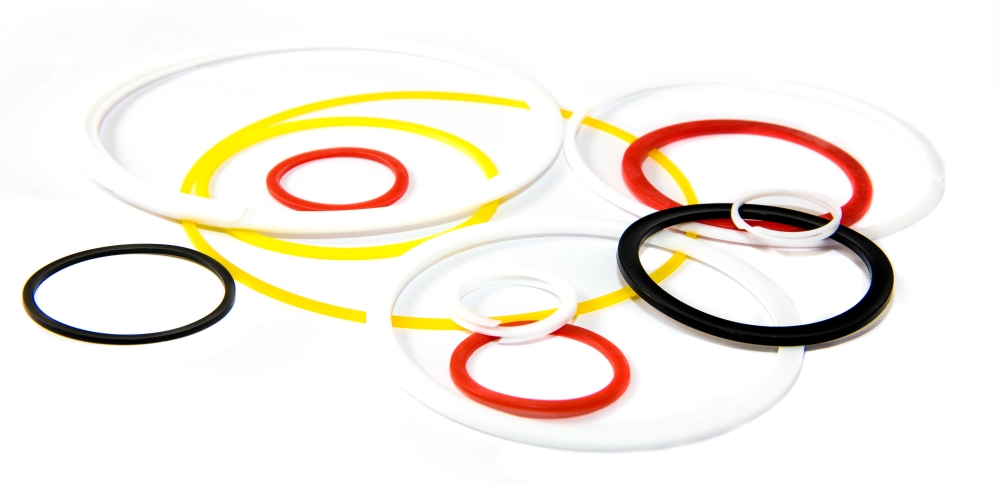Backup rings, also known as anti-extrusion rings of BURs, do exactly what their name implies: they act as back up support to sealing assemblies.

There are several different materials used to make backup rings, including both polymers and elastomers. The most common polymers for backup rings are PEEK, Nylon, and PTFE. Deciding which material to use is typically based on pressure and temperature requirements.
In this blog post, we will review the purpose and applications of backup rings, then discuss the ranges of pressure and temperature that PEEK, Nylon, and PTFE are suited for.Purpose of Backup Rings
A properly designed backup ring placed between the o-ring and the clearance gap can prevent the o-ring seal from extruding into the gap while providing both support and protection to the o-ring. They work well in situations where there is a large extrusion gap, high temperatures, or high pressures.Backup rings are are commonly used in:
- valves for hydraulic circuits
- chemical pumps
- injection molding machines
- adhesive dispensing valves
- presses
- machine tools
- pharmaceuticals
- agricultural machines
PEEK Backup Rings
PEEK can be used at pressures up to 20,000 psi and and a maximum temperature of 500°F. This makes PEEK ideal for high pressure and high temperature applications. PEEK is also available filled for addition strength and hardness. PEEK is quite compatible with a variety of chemicals, including cleaning compounds, and has low friction.
Nylon Backup Rings
Nylon 6,6 works well at pressures below 10,000 psi and a maximum temperature of 186°F. Nylon works well for high pressure applications but is quite limited with regard to temperature. Nylon 6,6 filled with Molybdenum Disulfide (MoS2) to reduce friction is commonly used for backup rings. One of the drawbacks of Nylon 6,6 is its water absorption, which can range from 0.5% to 1.4% per 24 hours.
PTFE Backup Rings
Filled PTFE (glass filled, carbon filled, graphite filled, bronze filled) works with pressures up to 5,800 psi, however virgin PTFE is limited to about 3,600 psi. Virgin PTFE, therefore, is limited to low and medium pressure applications while filled PTFE works for many medium to high pressure applications. The maximum operating temperature for PTFE is around 575°F, which makes it ideal for low pressure, high temperature applications. PTFE is very chemically resistant and has extremely low friction.
Conclusion
When it comes to backup rings, PTFE works well for low to medium pressure applications but can also handle high temperatures. Nylon can handle medium to high pressure applications but is limited by operating temperature and water absorption. When it comes to backup ring materials, PEEK is can handle the highest pressures and fairly high temperatures. Keep in mind that PEEK and PTFE are comparable when it comes to low friction and chemical compatibility, both of which are important in sealing applications
Post time: Apr-14-2017

